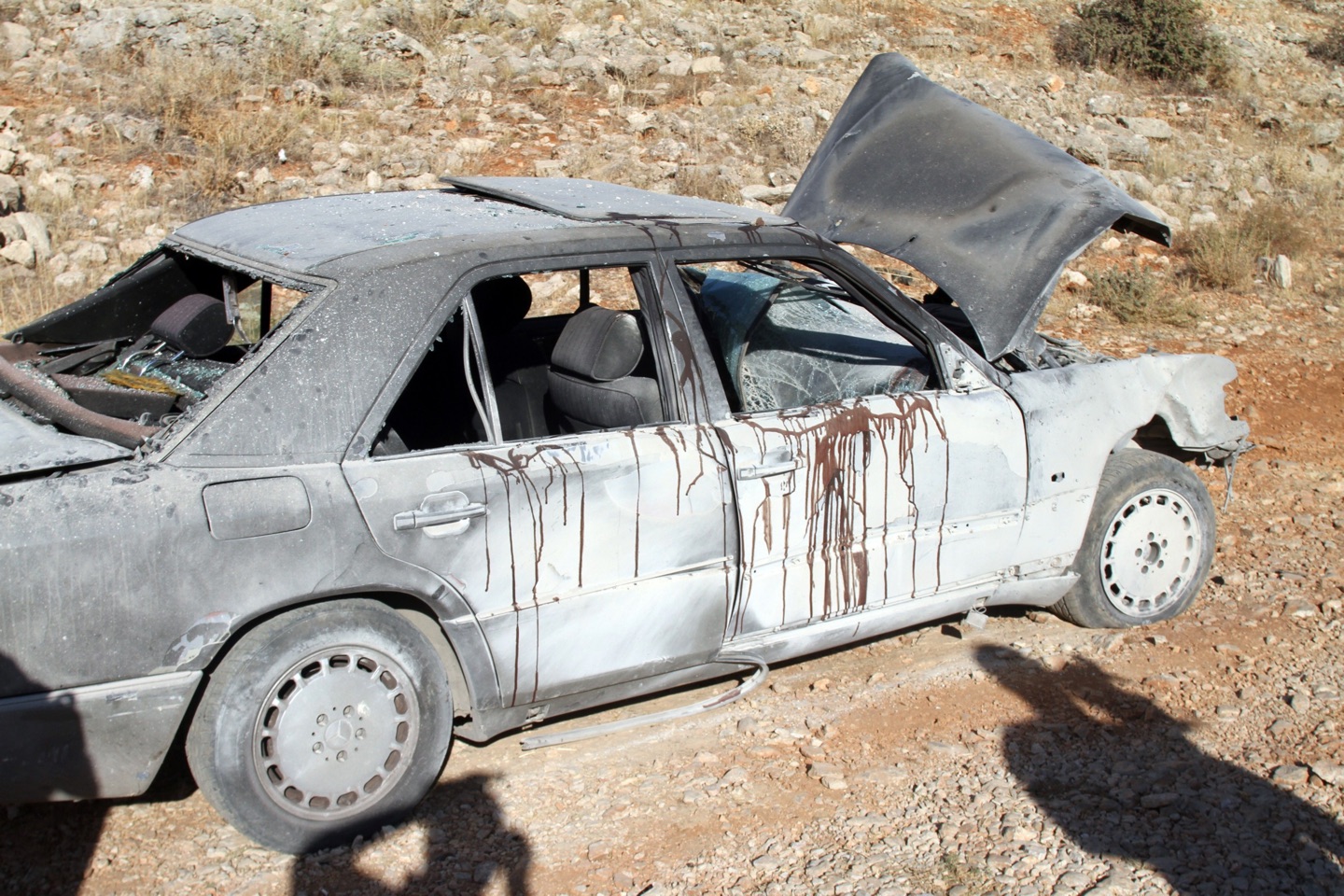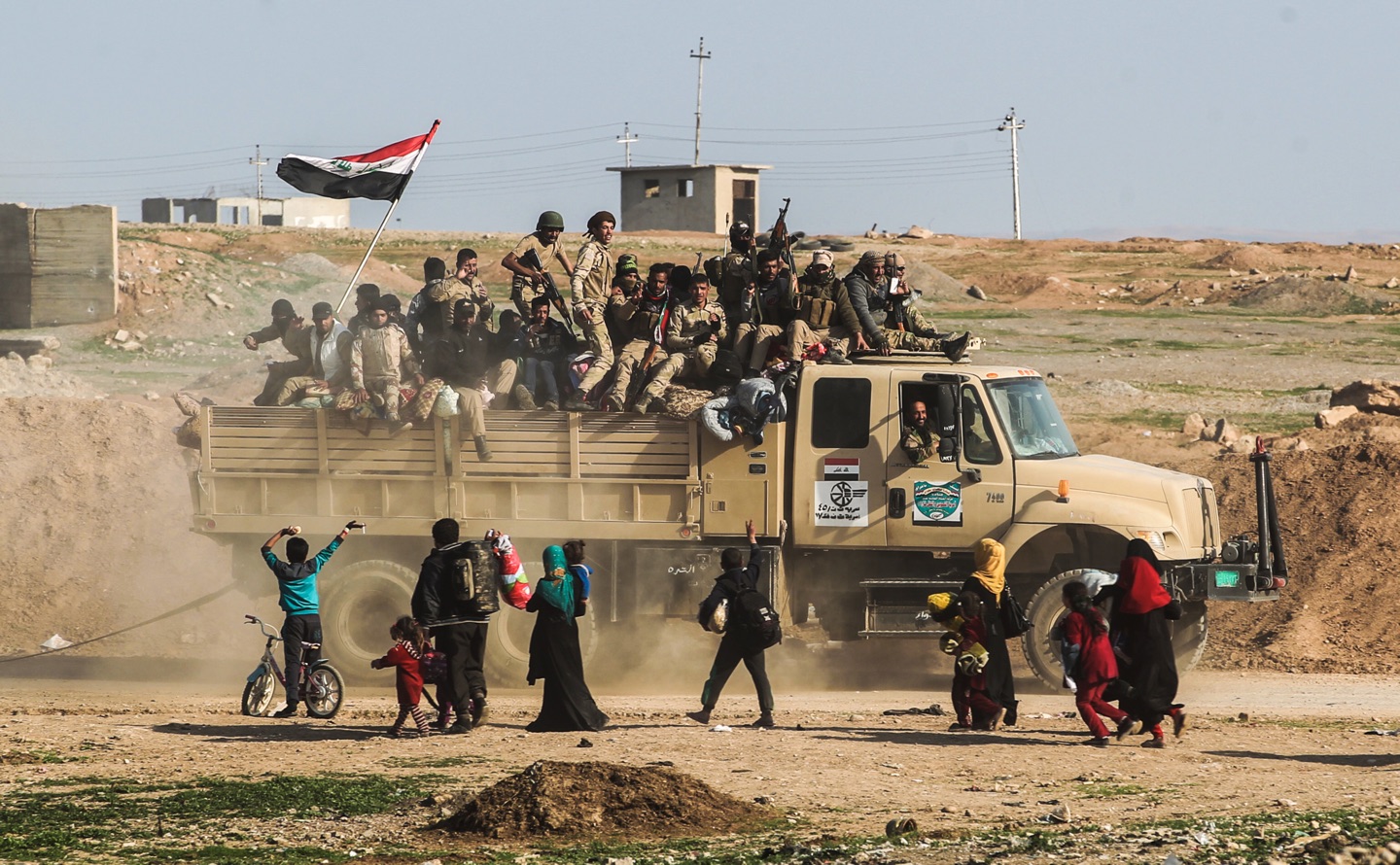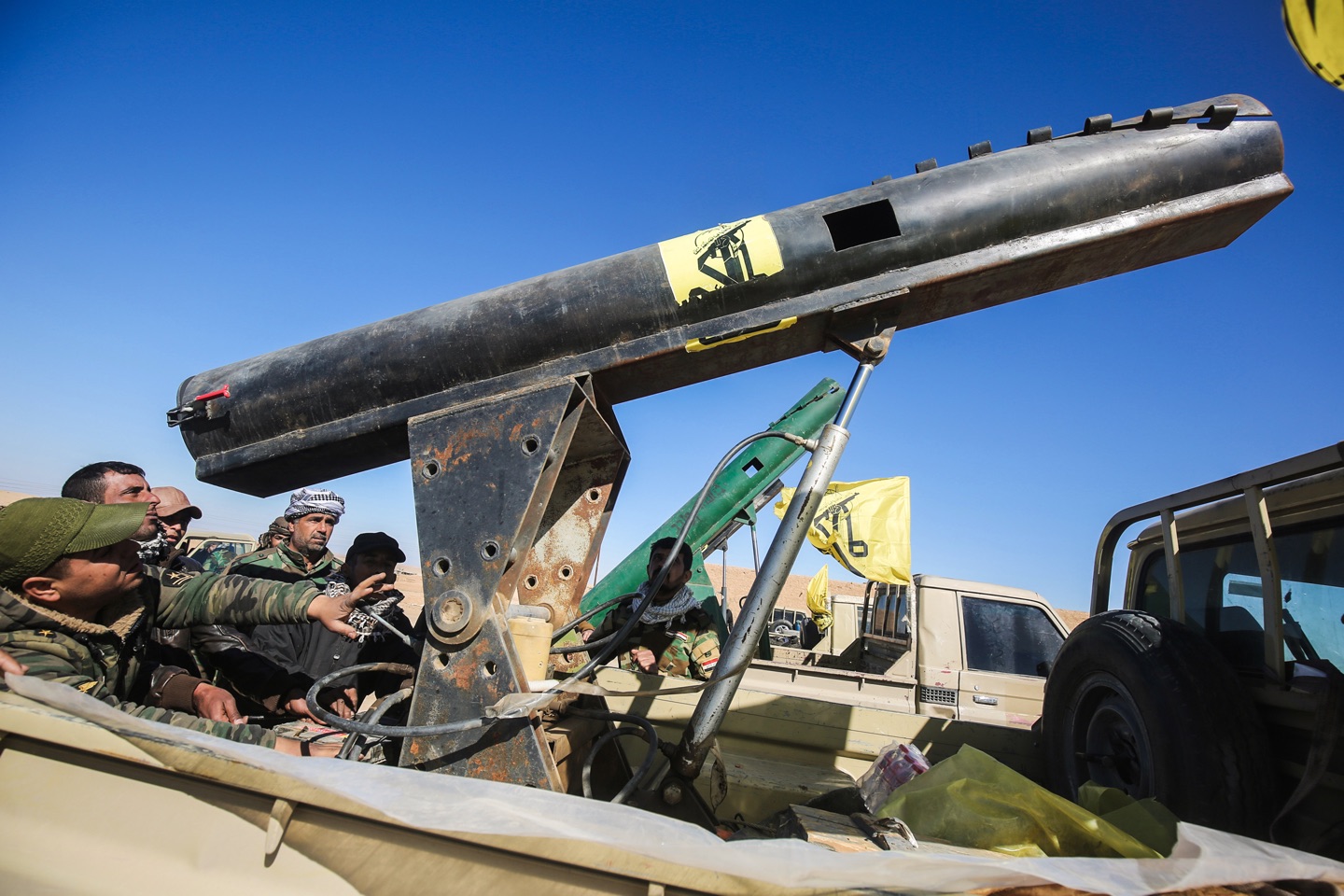R.P. Eddy is a former Director of the White House National Security Council and senior U.S. diplomat. He is the CEO of Ergo. Joseph Adams is an Ergo Middle East analyst specializing in the political, economic, and security dynamics of Iraq and Syria.
Experts clearly predicted the rise of ISIS and our government did nothing to stop it—and now there is a chance that history could be repeating.
In 2012, Robert Ford, then-ambassador to Syria, had eyes on the ground as that country’s fledgling civil war showed a disturbing potential to spiral beyond the borders and leave a vacuum. He warned both the White House and Congress that an al-Qaeda-like group would seize and hold large swaths of territory, even major cities on both sides of the Syria-Iraq border.
He was ignored.
ISIS, starting as a marginal off-shoot of al-Qaeda, filled that void through their extreme violence and discipline. And in the process, the group has been responsible for the deaths of likely well over 100,000 people, committed over 70 terrorist acts in 20 countries (not counting Iraq and Syria), and set off massive refugee flows that have destabilized the Middle East and Europe.
But ISIS’s days are numbered. As you read this, Iraqi special operators are slugging it out with ISIS snipers and child suicide bombers to capture what remains of ISIS’ Iraq capital: Mosul. Meanwhile, in neighboring Syria, a coalition of US-backed Kurdish and Arab militiamen, collectively known as the Syrian Democratic Forces, are getting ready to storm Raqqa, the capital of ISIS in Syria.
ISIS can try and run to new cities, but with Mosul and Raqqa surrounded, the so-called caliphate is on its last legs. Within six to twelve months, we believe ISIS will no longer control any significant territory in either Syria or Iraq.
However, this is no time to celebrate—terror and extremism in Iraq and Syria aren’t going anywhere. So now is the perfect time to ask, what comes next? The U.S. and our regional allies should watch for the rise of these three groups to pick up where ISIS leaves off:
Al-Qaeda in Syria
Al-Qaeda in Syria is slippery. It has repeatedly changed its name, cut ties with what’s left of al-Qaeda central, and forged deep bonds with local rebels in the Syrian Civil War (some of them US-backed). These contortions are all part of al-Qaeda’s master plan to obfuscate its foreign-extremist pedigree, and thus embed itself so deeply within Syria’s indigenous revolution that its ultimate objective—the declaration of a jihadi pseudo-state, and forging a unified front that subsumes all rebels under al-Qaeda’s black flag—would appear as a genuinely Syrian event.

Al-Qaeda has already taken significant steps towards this end: in January it officially merged with several of the largest Syrian rebel factions operating in northern Syria. Since then, al-Qaeda has relaxed its strict implementation of Wahhabist-style Islam in areas it controls, thereby concealing both the level of extremism it seeks to promote and terrorist threat it poses to the outside world.
Al-Qaeda hopes their revolution will appear as an historical inevitability, indistinguishable from the will of subject populations and allied armies; hence al-Qaeda’s careful strategy to nurture and ultimately coopt Syria’s grass-roots Islamist revolt.
So, while there’s a concerted effort working to defeat ISIS, al-Qaeda’s been biding its time under the radar. While it’s still a long way from declaring a “state” or a nationwide rebel front in Syria, al-Qaeda is well-positioned to lead the fight against the Assad regime, and thus only gain in national influence. In the event that al-Qaeda led rebels can score significant gains against Assad and operate from a position of increased leverage, the group will likely show its true colors and revert back to its brand of radical extremism—potentially on a larger scale.
This means that even with ISIS’ defeat in Syria, Al-Qaeda will be yet another, locally entrenched, transnational terror group to deal with for years to come—and despite a few strikes here and there, the United States has yet to do much about it.
Sunni Terrorist Cocktail
In one scenario, we fear a resurgent, reconstituted, post-collapse ISIS. Once an insurgent group loses land, it goes underground, switching tactics from guerrilla war to terrorism. In this sense, Mosul is like a hornet’s nest stashed inside a piñata. Go ahead and whack it with a baseball bat (that’s what you’re supposed to do—like piñatas, terror hangouts are meant to be destroyed). But once you break open Mosul, there’s going to be a lot of angry creatures flying out, looking to punish whoever perturbed their hive.

This means that soon Iraq will house many disaffected ex-ISIS fighters. The ones that aren’t killed or captured will meld back into the local population. Some will try and lead normal lives. Others will join a resurgent, covert ISIS terror program against Iraq’s citizens and armed forces.
This leads to a second scenario: There are other insurgent groups roaming around Iraq. They don’t get much press (ISIS hogs the limelight), but they’re there, including “al-Qaeda in Iraq” (a wholly separate group than the al-Qaeda in Syria) which is working to link with other local insurgents, some of them not necessarily jihadist, such as Jaysh al-Rijal al-Tariqa al-Naqshibandiya (JRTN) and the 1920’s Revolution Brigades. Some of these groups maintain connections to former Ba’athist strongmen, such as Izzat Ibrahim al-Douri, Saddam Hussein’s longtime right-hand man, who are known for their penchant for extreme violence and radical anti-American propaganda.
Mosul is like a hornet’s nest
stashed inside a piñata
What if scenarios one and two mix together into a Sunni Terrorist Cocktail? Will the post-collapse, reconstituted ISIS terror networks mix with al-Qaeda, and a handful of still-not-famous Iraqi insurgent groups? Perhaps, but in a more likely scenario, multiple Sunni guerrilla and terror factions will fight each other, the Iraqi government, and the Iraqi people, plunging the country into yet further bloodshed. Iraq is fragile; a third Sunni insurgency in Iraq may well arise if the United States repeats the fantastic blunder it made in 2011 and again deserts a traumatized, and divided Iraq.
Iraqi Hezbollah
New Sunni guerrillas and terrorists may take over ISIS’s mantle, as described above, but a very different, and very dangerous bunch could take over where ISIS falls off: Shi’a militiamen, terrorists, and paramilitary factions—some Tehran’s proxies, some religious fanatics, some with American blood on their hands.

Recall that before Sunni terror seized center stage, it was Shi’a political violence on everybody’s mind. Until 9/11, it was Shi’a Hezbollah that held the ugly distinction of having killed more Americans than any other terror group. Shi’a insurgents also bloodied the coalition’s nose during the Iraq War—with Asaib Ahl al-Haq claiming thousands of deadly attacks against coalitions forces. These same inimical Shi’a factions are today part of something called the Popular Mobilization Forces (PMF), a massive umbrella group containing multiple, mostly Shi’a, paramilitary groups that are marauding through Iraq. They’ve got cash, guns, tanks, helicopters, and tens of thousands of foot soldiers.
Not all PMF factions are created equal. Some hate us, as noted. But others are fully integrated with the Iraqi armed forces, eschewing both sectarian factionalism, anti-Americanism, and Iranian string-pulling. And in defense of Shi’a holy sites and core territories, all PMF are a potent force against ISIS. To this end, PMF, in its various forms, has inserted itself into every major anti-ISIS campaign in Iraq—despite repeated allegations of collateral damage, war crimes, and service to Iran.
The PMF is, in sum, a complicated force. On the one hand, it is a legitimate corps of the Iraqi armed forces, contributing greatly to the demise of ISIS. Yet on the other, it contains hostile, Iranian-backed proxies that regularly defy Baghdad’s authority, threaten the United States, and in doing so, increasingly resemble the role and influence of Hezbollah in Lebanon.
How does PMF become a post-ISIS threat to the United States? PMF may fight alongside the Iraqi army to kill insurgents and win back stolen land. As co-captain of the Iraqi army’s victory, PMF will help call the shots in liberated lands, inserting its commanders into key Iraqi positions in local security and political services. Broadly, Shi’a PMF can inflame sectarian tensions by using newfound power and officialdom to punish Sunnis (for any number of reasons, from straight corruption and sectarian grudges to accusations of ISIS collaboration).
Widespread claims by human rights organizations of PMF factions torturing, killing, forcibly disappearing, and in some cases even beheading Sunni internally displaced persons (IDPs) fleeing war-torn parts of Iraq have largely tarnished the group’s image in the wider Sunni world. Arabic media outlets that appeal to Sunnis regularly portray the PMF as simply the opposite side of the same coin: A Shi’a version of ISIS that will seek to export violence and extremism to the broader region, killing Muslims in the process. As PMF militias become more powerful in Iraq, their actions will provoke an extreme response from Sunnis living under their yoke.
PMF also gives our enemy Iran a powerful hand in Iraq. Iran can use its proxies within PMF to slowly turn up the heat on US/allied forces in Iraq, exacting a price for a continued Western presence. Notably, Iraq’s Minister of Interior is a former commander of the Badr Corps—an infamous Shi’a militia that has killed and maimed many Americans. A Hezbollah-influenced Iraq will frustrate US/allied objectives in the region long after ISIS falls.
Ambassador Ford warned us loud and clear that ISIS was coming and that we’d better deal with it. We missed that chance. Let’s not repeat the mistake with these new, emerging threats to the Middle East and to the Western world.
Ergo delivers frontline intelligence on critical issues across the globe. Ergo supplies “ground truth” that others can’t access by tapping into a range of unique data streams, including a proprietary network of well-placed in-country assets. Leading investors, Fortune 500 corporations, law firms, and the US and allied governments rely on Ergo to stay ahead of markets, headlines, and competitors. Harvard Business Review said Ergo is “breaking from industry orthodoxy” with a “radically new model” of consulting. Click here to find out more about Ergo.
This article was featured in the InsideHook newsletter. Sign up now.























